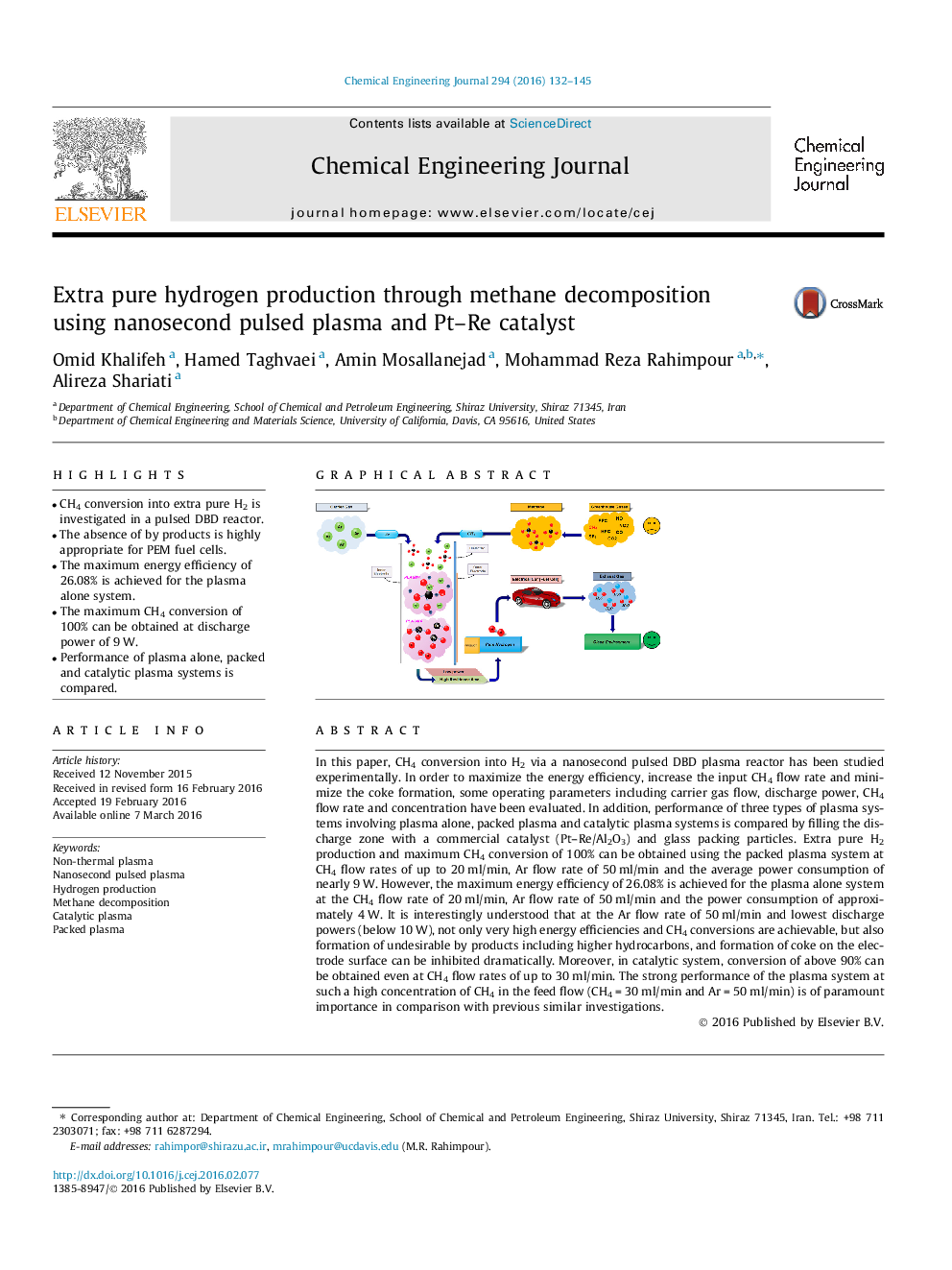| کد مقاله | کد نشریه | سال انتشار | مقاله انگلیسی | نسخه تمام متن |
|---|---|---|---|---|
| 145731 | 456349 | 2016 | 14 صفحه PDF | دانلود رایگان |

• CH4 conversion into extra pure H2 is investigated in a pulsed DBD reactor.
• The absence of by products is highly appropriate for PEM fuel cells.
• The maximum energy efficiency of 26.08% is achieved for the plasma alone system.
• The maximum CH4 conversion of 100% can be obtained at discharge power of 9 W.
• Performance of plasma alone, packed and catalytic plasma systems is compared.
In this paper, CH4 conversion into H2 via a nanosecond pulsed DBD plasma reactor has been studied experimentally. In order to maximize the energy efficiency, increase the input CH4 flow rate and minimize the coke formation, some operating parameters including carrier gas flow, discharge power, CH4 flow rate and concentration have been evaluated. In addition, performance of three types of plasma systems involving plasma alone, packed plasma and catalytic plasma systems is compared by filling the discharge zone with a commercial catalyst (Pt–Re/Al2O3) and glass packing particles. Extra pure H2 production and maximum CH4 conversion of 100% can be obtained using the packed plasma system at CH4 flow rates of up to 20 ml/min, Ar flow rate of 50 ml/min and the average power consumption of nearly 9 W. However, the maximum energy efficiency of 26.08% is achieved for the plasma alone system at the CH4 flow rate of 20 ml/min, Ar flow rate of 50 ml/min and the power consumption of approximately 4 W. It is interestingly understood that at the Ar flow rate of 50 ml/min and lowest discharge powers (below 10 W), not only very high energy efficiencies and CH4 conversions are achievable, but also formation of undesirable by products including higher hydrocarbons, and formation of coke on the electrode surface can be inhibited dramatically. Moreover, in catalytic system, conversion of above 90% can be obtained even at CH4 flow rates of up to 30 ml/min. The strong performance of the plasma system at such a high concentration of CH4 in the feed flow (CH4 = 30 ml/min and Ar = 50 ml/min) is of paramount importance in comparison with previous similar investigations.
Figure optionsDownload as PowerPoint slide
Journal: Chemical Engineering Journal - Volume 294, 15 June 2016, Pages 132–145